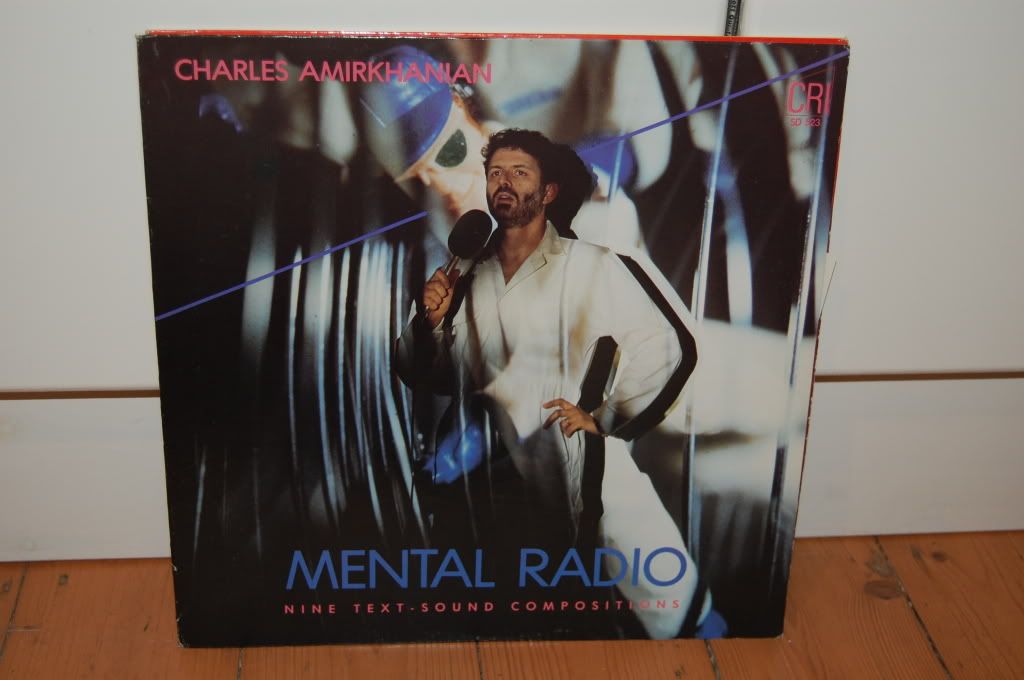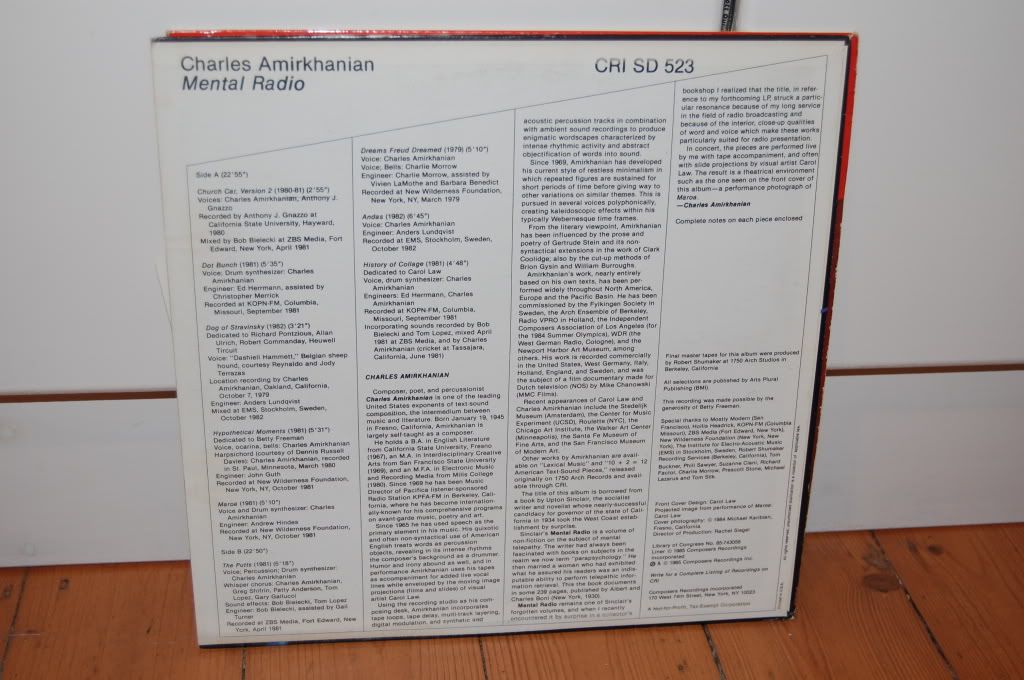I have long ago given up looking for anything specific in charity shops. The fun, for me, is in letting yourself go and trying something new. For a pound you can suspend critical heirachy and buy anything you want as long as it looks interesting. If you are right and it is interesting you've scored. If not you've dontated a pound to charity.
The congruence of events that brings a record into your hands in a charity shop never ceases to amaze me. Here I am, at the specific time to find this record, and in the right frame of mind to pick it up. Maybe a day later and it wouldn't be there. A day earlier and it would not have been donated.
How did it get here, who owned it before me, was it part of large collection, did the previous owner listen to it often, what were they like?
Back to the charity shop and you know the scene: A man in his early thirties is squatting over a box of records inconveniently placed underneath some acrylic dresses.
His fingers flick over the pile of dog-eared and battered records. His eyes, well practiced in recognising record covers, need no more that a few seconds to take in the pictures. Military Band records, Original Broadway Cast records, Mantovani, Cliff Richard, Phil Collins.
Then he sees something that he does not recognise. Who is this strange man in a boiler suit with a oicture of a toy baseball player projected on to him? He looks odd and unusual and when it turns out that the record is on the CRI label (Composers Recordings Incorporated, A Not-For-Profit, Tax-Exempt Corporation) the deal is done and a pound changes hands
Charles Amirkhanian describes himself in the linear notes as a 'composer, poet and percussionist' and is 'one of the leading United States exponents of text-sound composition, the intermedium between music and literature.'
Now, there is no doubt that this is music with intellectual pretentions. It is music that is composed rather than written, performed rather than played, involving pieces not songs, and taking in influences ranging from Freud, to Stravinsky and Upton Sinclair.
However, and slightly to my surprise, it is hugely engaging and warm.
This is in no small part the result of the use of early synthesisers. This record was released in 1985 but most of the 'pieces' were recorded in 1981 or 1982. He uses very early drum synths, vocoders and Eventide Harmonisers amongst others as well as off-beam percussion instruments.
Amirkhanian's voice is also very deep and warm and reminds me slightly of Ken Nordine. I like his West Coast accent and his intonation.
He is also clearly very humerous. At one time he says/sings 'Bomb, bomb, fondue' which put a smile on my face. He also recorded the barking of a dog and used it as the basis for the piece 'Dog of Stravinsky'. Perhaps I am laughing slightly at him and he did not mean to be funny. But I can't help myself.
I also love the exploratory way in which the music was made. Rather like one of the Radiophonic Workshop composers he is always looking for ways to make unusal sounds, preferably sounds that have not been made before. He records ducks and dogs and people snoring, he speeds the music up and slows it down, records acoustic instruments and plays them through synths, takes his voice and chops it up and re-arranges it, selects words for their sounds not meanings,
He comes across as part Ken Nordine, part Gil Scott Heron and part loopy teacher. In essence, he comes across as like no one else I have heard before.
There are copious notes about the music which I hope you can read and there is also an insert that came with it as well. It is music to be taken SERIOUSLY.
I would never have searched for this record. If I had heard of Amirkhanian I would probably never have wanted to own one of his recordings. But now I have one and I am very pleased about that.


There's SHOCKING news in the sports betting world.
ReplyDeleteIt has been said that any bettor needs to look at this,
Watch this or stop placing bets on sports...
Sports Cash System - Sports Betting ROBOT